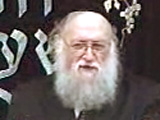Beit Midrash
- Sections
- Chemdat Yamim
- Parashat Hashavua
- Torah Portion and Tanach
- D'varim
- Ki Tavo
First, what was written on the stones? According to Rashi, exactly what the Torah says – all of the Torah, and, also, it was found in translation into 70 languages. Rabbi Shimon bar Yochai says that "only" Sefer Devarim was written. Rabbi Yossi says that only passages that relate to the nations of the world were written, apparently in 70 languages. Ibn Ezra cites Rav Saadia Gaon as saying that there was a succinct listing of the 613 mitzvot of the Torah. The Ramban agrees with Rashi that the whole Torah was written but not in 70 languages, and he comments that either very large stones were used or their writing was an act of miracle. Abarbanel cites an opinion that the content was the story of the Exodus and the entry into the Land.
We have a parallel discussion regarding the writing of a Torah scroll for the king to take with him and read throughout his reign in order to help him fear Hashem and know what to do (Devarim 17:18-19). The Torah calls this scroll a mishneh Torah, which is hard to translate but has something to do with the number two. The gemara (Sanhedrin 21b) says that there were two Torah scrolls, one that he took with him and one that he kept stored away safely. The one that he took with him was made like an amulet that he attached to his arm. The Rashash (ad loc.) asks that it is forbidden to hang a sefer Torah from anything, which would be the situation if he tied it to his arm. He suggests the possibility that it was not a full sefer Torah, but was like the listing of mitzvot that Rav Saadia Gaon talked about regarding the writing of the stones. The Rashash also cites the Maharshal who says that the king’s sefer Torah had very small letters. This enabled him to carry it easily and not have it constrain his actions. On the other hand, the Maharasha (ad loc.) says that there is no basis for this hypothesis.
In our day and age it is possible to write the entire Torah on a "little stone" (or silicon, as it may be). Every person, not just the king, can carry around with him (six days a week), a full Jewish library and take advantage of every free moment to learn Torah. We thus take this opportunity to thank those responsible for such sites as Hebrew Books and Sefaria, who make it possible to access almost the whole Torah, almost anywhere, for almost everyone. This too is a sign of the atchalta d’geula (the beginning of our salvation).

Glory in the Clouds
Rabbi Yossef Carmel | 7 Shvat 5768

The Intersection of the Three Eichas
Rabbi Moshe Erenreich | 6 Av 5767

Parashat Hashavua: Is “Not Good” the Same as Bad?
Rabbi Yossef Carmel | Tishrei 5786




















